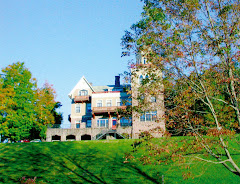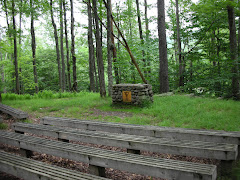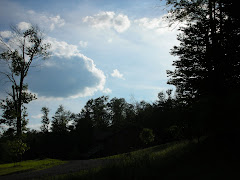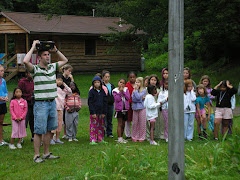Thursday, December 30, 2010
more about dialysis
Many Frost Valley friends are aware of our innovative program enabling children with renal disease to attend camp--a mainstreaming program we began in 1975 in partnership with the Gottscho Kidney Foundation of NJ and the Albert Einstein Medical College Hospital in the Bronx (the partnership there has since shifted to Montefiore Hospital). But many of us don't know much about pediatric kidney failure or about dialysis (the first treatment for those afflicted with the disease). Here, below, is a recent story about dialysis.
- - -
Dialysis: An Experiment In Universal Health Care
November 9, 2010
National Public Radio
by Robin Fields
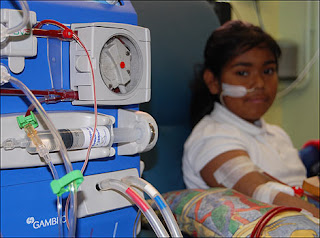 Every year, more than 100,000 Americans start dialysis treatment, a form of chronic care given to people with failing kidneys. And for many, the cost is completely free. Since 1972, when Congress granted comprehensive coverage under Medicare to any patient diagnosed with kidney failure, both dialysis and kidney transplants have been covered for all renal patients.
Every year, more than 100,000 Americans start dialysis treatment, a form of chronic care given to people with failing kidneys. And for many, the cost is completely free. Since 1972, when Congress granted comprehensive coverage under Medicare to any patient diagnosed with kidney failure, both dialysis and kidney transplants have been covered for all renal patients.
But a new joint investigation between The Atlantic and ProPublica found many problems with dialysis in the U.S.: The cost of treatment is among the world's highest, while the U.S. mortality rate for dialysis patients is one of the world's worst. One in four patients will die within 12 months of starting treatment.
Investigative reporter Robin Fields, who spent the past year reviewing thousands of documents and interviewing more than 100 patients, doctors, policymakers and experts, found systematic failures in the way dialysis centers are set up in the United States.
"At clinics from coast to coast, patients commonly receive treatment in settings that are unsanitary and prone to perilous lapses in care," she writes in a piece that will be published in the December issue of The Atlantic. "Regulators have few tools and little will to enforce quality standards. Industry consolidation has left patients with fewer choices of provider. [And] the government withholds critical data about clinics' performance from patients, the very people who need it most."
A Growing Industry
The kidney dialysis industry, Fields tells Fresh Air's Terry Gross, is now "hugely larger than anyone could have imagined."
"There are far more patients. There are far more complicated patients. And the expense of this is wildly beyond the expectations of the architects of the program," she says.
The program that initially cost the taxpayers $135 million a year is now a multibillion-dollar industry. The two chains that dominate the dialysis industry, DaVita and Fresenius, make about $2 billion combined in operating costs per year, she explains. And the industry is expected to grow: Every year, the pool of patients increases by 3 percent.
"When the program started, the original estimates thought there could be perhaps 35,000 patients," she says. "Then as that became clear that that wasn't going to be true, they thought maybe 50,000 patients -- then 90,000. But what's really happened is the patient community has continued to grow because of conditions like diabetes and obesity becoming so much more common in the larger health care system."
Six percent of all Medicare money, Fields writes, goes toward treating people with kidney failure. But Medicare doesn't set staffing ratios for dialysis clinics. Fields explains that clinics are required to have a medically licensed physician, but the physician is not always present for all dialysis treatments. Some nurses and licensed technicians juggle far more patients than what standards recommend. And some clinics turn over three to four shifts of patients a day.
"What we found in examining inspection reports as broadly and deeply as we could is that many of the same patterns cropped up time and time again: unsafe and unsanitary conditions; prescription and medical errors; issues in infection control; issues that dealt with the amount of staffing, the training of staff and the supervision of staff," Fields says. "I should emphasize, this isn't all clinics. Some clinics do a great job. But what we found, not only looking at inspections but at interviewing people broadly, was that some clinics are operating in a way that seems to ratchet up risks and that reflected some of the frustrations voiced by patients and doctors and other practitioners alike about one-size-fits-all care that didn't really give patients the best of the medicine that's available or the best of the treatment options available."
Transitioning To Private Care
Today more than 80 percent of the 5,000 dialysis centers operating in the United States are private, a major change from the mainly hospital-based care patients received in the 1970s and 1980s. Fields says the transition happened because the payment policies for dialysis treatment helped create financial incentives that allowed corporations to enter the market.
"The payment policies at the beginning were said to be quite generous and to draw providers in to create the desperately needed access that the [dialysis] program was based on," she says. "And the people who float in to create that access were mostly for-profit providers. ... Ultimately, as the payment policies evolved to somewhat suppress the price of each treatment, what you found happening was that that sort of favored providers who had economies of scale and could have purchasing power that lowered their cost. And the product of that has been a vast changeover in who provides the care."
She says that some reforms are in the works to improve patient care, including Medicare's plan to offer a set payment for patients' combined treatments and drugs, instead of paying for each separately. The combined payment, says Fields, removes the incentive for clinics to overuse drugs to generate profits.
"I think that mostly people in the dialysis world view these things as incremental improvements and not the things that could vault us forward in a major way," she says. "And they're hoping for further changes that lead to ... different definitions of quality and performance."
Robin Fields is a senior editor at ProPublica. She has received a National Journalism Award for her investigative reporting, as well as the Associated Press Managing Editors Public Service Award. [Copyright 2010 National Public Radio]
- - -
Dialysis: An Experiment In Universal Health Care
November 9, 2010
National Public Radio
by Robin Fields
 Every year, more than 100,000 Americans start dialysis treatment, a form of chronic care given to people with failing kidneys. And for many, the cost is completely free. Since 1972, when Congress granted comprehensive coverage under Medicare to any patient diagnosed with kidney failure, both dialysis and kidney transplants have been covered for all renal patients.
Every year, more than 100,000 Americans start dialysis treatment, a form of chronic care given to people with failing kidneys. And for many, the cost is completely free. Since 1972, when Congress granted comprehensive coverage under Medicare to any patient diagnosed with kidney failure, both dialysis and kidney transplants have been covered for all renal patients.But a new joint investigation between The Atlantic and ProPublica found many problems with dialysis in the U.S.: The cost of treatment is among the world's highest, while the U.S. mortality rate for dialysis patients is one of the world's worst. One in four patients will die within 12 months of starting treatment.
Investigative reporter Robin Fields, who spent the past year reviewing thousands of documents and interviewing more than 100 patients, doctors, policymakers and experts, found systematic failures in the way dialysis centers are set up in the United States.
"At clinics from coast to coast, patients commonly receive treatment in settings that are unsanitary and prone to perilous lapses in care," she writes in a piece that will be published in the December issue of The Atlantic. "Regulators have few tools and little will to enforce quality standards. Industry consolidation has left patients with fewer choices of provider. [And] the government withholds critical data about clinics' performance from patients, the very people who need it most."
A Growing Industry
The kidney dialysis industry, Fields tells Fresh Air's Terry Gross, is now "hugely larger than anyone could have imagined."
"There are far more patients. There are far more complicated patients. And the expense of this is wildly beyond the expectations of the architects of the program," she says.
The program that initially cost the taxpayers $135 million a year is now a multibillion-dollar industry. The two chains that dominate the dialysis industry, DaVita and Fresenius, make about $2 billion combined in operating costs per year, she explains. And the industry is expected to grow: Every year, the pool of patients increases by 3 percent.
"When the program started, the original estimates thought there could be perhaps 35,000 patients," she says. "Then as that became clear that that wasn't going to be true, they thought maybe 50,000 patients -- then 90,000. But what's really happened is the patient community has continued to grow because of conditions like diabetes and obesity becoming so much more common in the larger health care system."
Six percent of all Medicare money, Fields writes, goes toward treating people with kidney failure. But Medicare doesn't set staffing ratios for dialysis clinics. Fields explains that clinics are required to have a medically licensed physician, but the physician is not always present for all dialysis treatments. Some nurses and licensed technicians juggle far more patients than what standards recommend. And some clinics turn over three to four shifts of patients a day.
"What we found in examining inspection reports as broadly and deeply as we could is that many of the same patterns cropped up time and time again: unsafe and unsanitary conditions; prescription and medical errors; issues in infection control; issues that dealt with the amount of staffing, the training of staff and the supervision of staff," Fields says. "I should emphasize, this isn't all clinics. Some clinics do a great job. But what we found, not only looking at inspections but at interviewing people broadly, was that some clinics are operating in a way that seems to ratchet up risks and that reflected some of the frustrations voiced by patients and doctors and other practitioners alike about one-size-fits-all care that didn't really give patients the best of the medicine that's available or the best of the treatment options available."
Transitioning To Private Care
Today more than 80 percent of the 5,000 dialysis centers operating in the United States are private, a major change from the mainly hospital-based care patients received in the 1970s and 1980s. Fields says the transition happened because the payment policies for dialysis treatment helped create financial incentives that allowed corporations to enter the market.
"The payment policies at the beginning were said to be quite generous and to draw providers in to create the desperately needed access that the [dialysis] program was based on," she says. "And the people who float in to create that access were mostly for-profit providers. ... Ultimately, as the payment policies evolved to somewhat suppress the price of each treatment, what you found happening was that that sort of favored providers who had economies of scale and could have purchasing power that lowered their cost. And the product of that has been a vast changeover in who provides the care."
She says that some reforms are in the works to improve patient care, including Medicare's plan to offer a set payment for patients' combined treatments and drugs, instead of paying for each separately. The combined payment, says Fields, removes the incentive for clinics to overuse drugs to generate profits.
"I think that mostly people in the dialysis world view these things as incremental improvements and not the things that could vault us forward in a major way," she says. "And they're hoping for further changes that lead to ... different definitions of quality and performance."
Robin Fields is a senior editor at ProPublica. She has received a National Journalism Award for her investigative reporting, as well as the Associated Press Managing Editors Public Service Award. [Copyright 2010 National Public Radio]
Labels:
dialysis,
Gottscho Foundation,
Montefiore Hospital
Thursday, December 23, 2010
let's send kids to camp next summer!
 This holiday season I have been raising money to send kids with kidney failure to camp next summer. My goal is $13,000 and I'm now at $11,770. I invite readers of my blog to go here (frostvalley.kintera.org/yearend2010/afilreis) and consider--please--making a donation. The gift you make for this kids is fully tax deductible, and the online system is good and secure, I promise.
This holiday season I have been raising money to send kids with kidney failure to camp next summer. My goal is $13,000 and I'm now at $11,770. I invite readers of my blog to go here (frostvalley.kintera.org/yearend2010/afilreis) and consider--please--making a donation. The gift you make for this kids is fully tax deductible, and the online system is good and secure, I promise. I've been associated with Frost Valley since I was 8 years old. I was a camper, then a counselor, then a director for many summers and now proudly serve as a member of the Board of Trustees.
 In 1975, Frost Valley partnered with the Ruth Gottscho Kidney Foundation to become the first camp in the world to offer children with kidney disease a chance to experience summer camp ("mainstreamed" with healthy kids) while also receiving their dialysis treatments. These children have experienced sleepaway camp while gaining confidence and independence in what is typically their first time away from family and home. Most learn new skills for managing and coping with their medical condition. I've seen this program succeed miraculously for 30 years.
In 1975, Frost Valley partnered with the Ruth Gottscho Kidney Foundation to become the first camp in the world to offer children with kidney disease a chance to experience summer camp ("mainstreamed" with healthy kids) while also receiving their dialysis treatments. These children have experienced sleepaway camp while gaining confidence and independence in what is typically their first time away from family and home. Most learn new skills for managing and coping with their medical condition. I've seen this program succeed miraculously for 30 years.The cost of sending one child on dialysis to camp for a two-week session is $1,500. Will you join me and please make a donation today?
Saturday, December 18, 2010
at the reunion
Sunday, December 12, 2010
Sunday, December 5, 2010
Wednesday, December 1, 2010
Gorm Fosdal returns
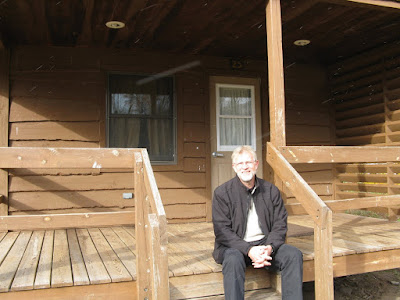 Gorm Fosdal was an international counselor in 1982 and visited briefly in '85. He and his family (his wife and two kids, 19 and 22) visited Frost Valley recently. Gorm hadn't been back in 25 years. He was a counselor in Hemlock which in those days was housed in cabins 21-25. His was 25. The photo here shows Gorm sitting in front of cabin 25 once again. Below is what Gorm wrote about this trip and he asks us to forgive his imperfect English:
Gorm Fosdal was an international counselor in 1982 and visited briefly in '85. He and his family (his wife and two kids, 19 and 22) visited Frost Valley recently. Gorm hadn't been back in 25 years. He was a counselor in Hemlock which in those days was housed in cabins 21-25. His was 25. The photo here shows Gorm sitting in front of cabin 25 once again. Below is what Gorm wrote about this trip and he asks us to forgive his imperfect English:I had a very nice return to New York and Frost Valley with all my family, and youngsters aged 18 and 22 were ready to stay in the City. They just loved it. We were lucky to be blessed with very nice weather in The Big Apple, and though nice sunny weather very cold and some dazzle in the Catskills.
It was very nice to be back at Frost Valley, but also strange as it was the first time being there without the many children in the summer. I was counselor in 1982 and visited FV twice in the summer of 85, after touring US for 5 weeks. It was great being there and we, because of the weather, drove more than walked around, which was a big change from the time being a counselor, where the shoes were much in use.
My wife Anne Marie was a cuonselor also in the Catskills in 1981, close to Parksville near Elko Lake at a camp run by The Presbyterian Church. We found the surroundings the next day, but it has not been a camp for years, and now private property.
Being there again is just like it was yesterday though it is 25 years ago, but thats how wonderful memories are for your life. In Liberty we met some other people also on a memory lane tour, who thought we were from Canada with our strange language, and were very surprised that Europeans found this small place in the US of all places.
Subscribe to:
Posts (Atom)


